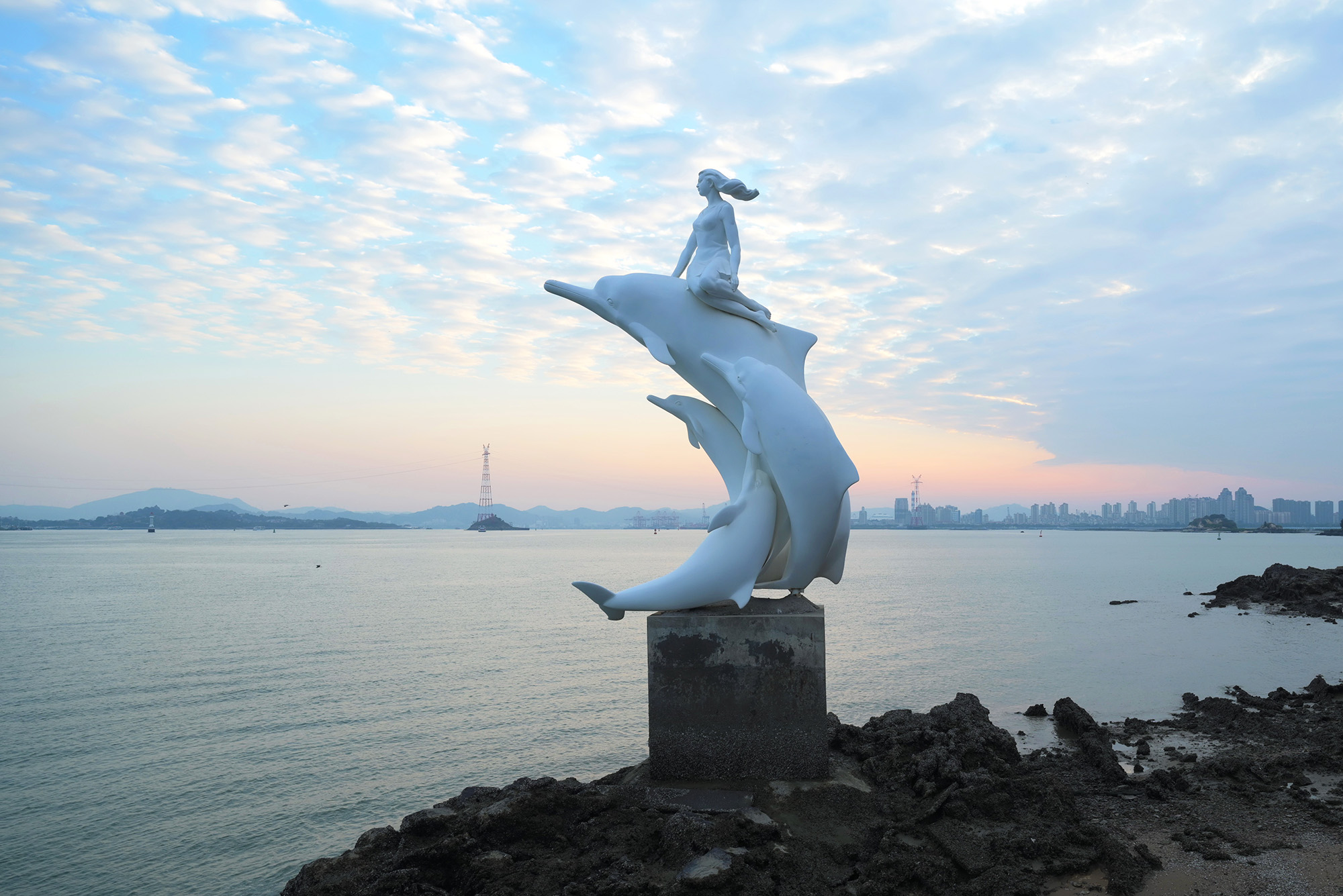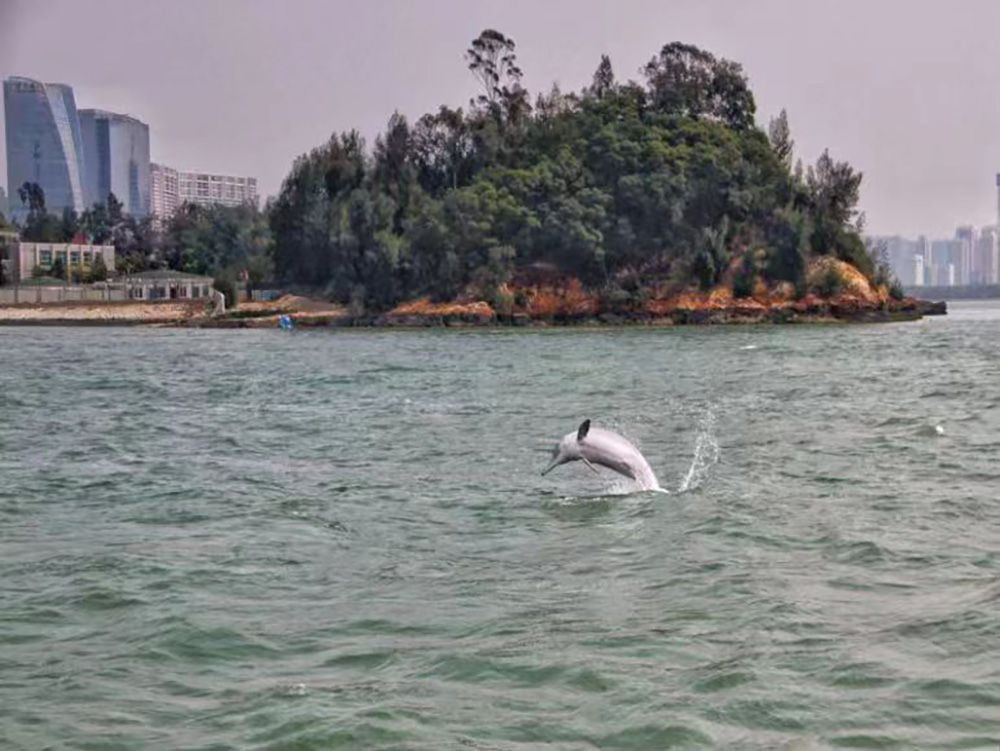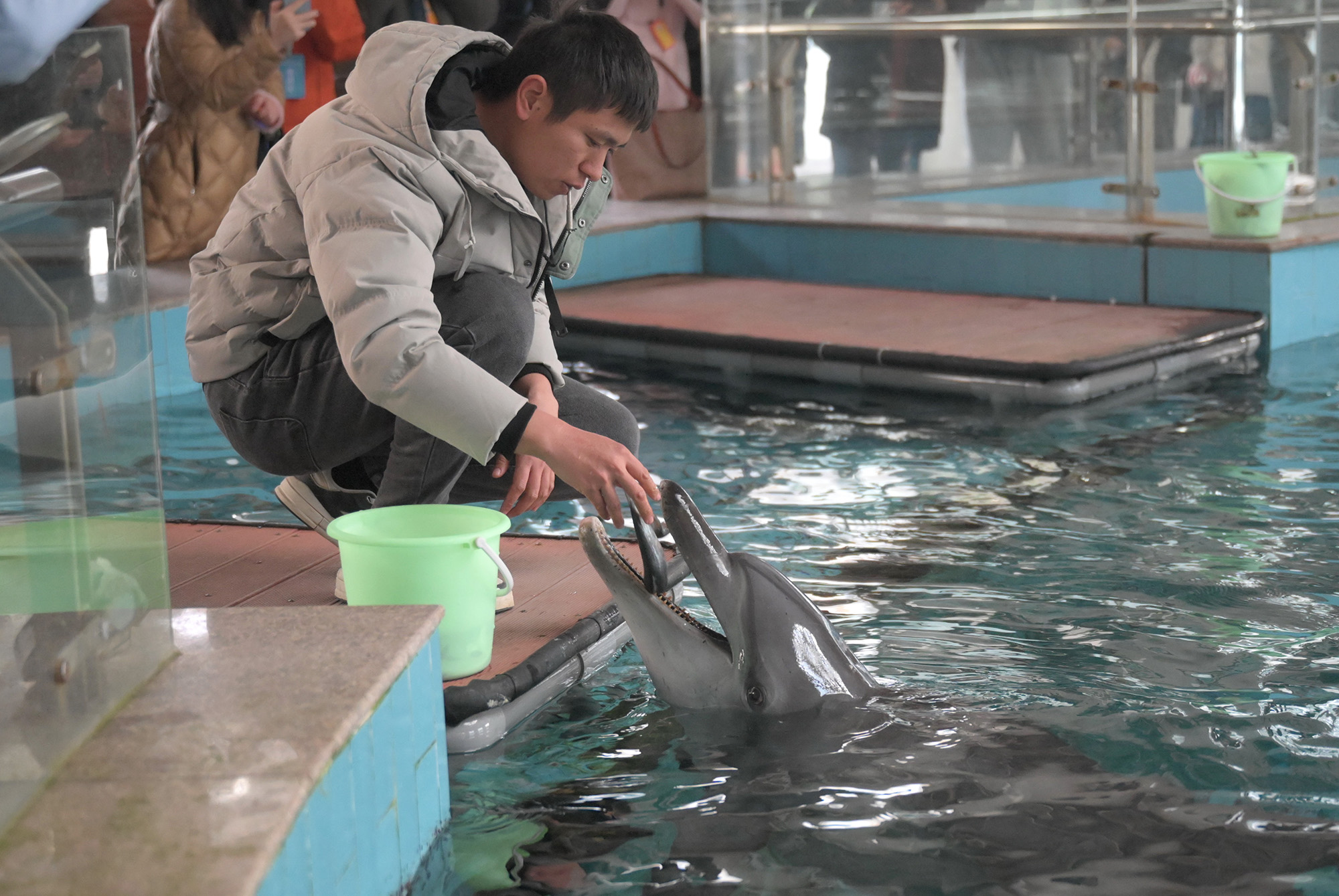Multi-pronged conservation efforts spark a resurgence of Chinese white dolphins off the coast of Xiamen

Editor’s note: As protection of the planet’s flora, fauna and resources becomes increasingly important, China Daily is publishing a series of stories to illustrate the country’s commitment to safeguarding the natural world.
In late January, a pod of Chinese white dolphins was seen jumping, swimming and generally frolicking near Huoshaoyu Island off the coast of Xiamen in Southeast China’s Fujian province.
“In the cold months from December through February, dolphins are likely to seek inner bays and harbors with calm winds and waves to spend the winter,” said Xu Jing, an official with the Xiamen Chinese White Dolphin Nature Reserve. She added that in recent years it has become more common to spot dolphins in the relatively calm western waters.
The Chinese white dolphin, or Indo-Pacific humpback dolphin, inhabits shallow coastal waters from Southeast China to East India. It garnered “Chinese” in its name after being observed in China in the 1600s. The cetacean, which is under first-class State protection in China, is regarded as an indicative species for marine ecological health, due to its sensitivity to water quality.
Owing to years of dedicated conservation efforts and support from local communities, Xiamen, one of just a handful of coastal Chinese cities where Chinese white dolphins can be observed from an urban setting, has witnessed a resurgence in the population.
“The Chinese white dolphin is a species at the top of the food chain. The continued sightings of the dolphins in the city’s waters imply that our marine ecosystem and the entire food chain are well-preserved and supportive of their survival,” said Xin Jianjun, former head of the Xiamen Fisheries Administration.

Despite local fishermen fostering profound respect and a strong sense of guardianship and protection for Chinese white dolphins due to the long-standing belief that they symbolize tranquil seas and a bountiful catch, coastal development projects in Xiamen at the end of the last century encroached upon the aquatic mammals’ habitats.
“In the 1980s and 1990s, the development of ports, waterways, shipping and nearshore aquaculture, along with the deteriorating water quality, led to a significant decrease in the population of Chinese white dolphins, making it increasingly rare to observe these creatures playing in the city’s waters,” Xin said.
In response, Xiamen took steps to address the problem by introducing vital legal protections and issuing the country’s inaugural regulation for the safeguarding of the Chinese white dolphin population and their habitats.
At the same time, the city in 1997 set up China’s first provincial-level nature reserve for the Chinese white dolphin, which served as a model for areas in Guangdong and the Guangxi Zhuang autonomous region to establish their own nature reserves for the mammal.
Drawing on previous efforts, the provincial-level nature reserve for the Chinese white dolphin, together with the existing nature reserves for lancelets and egrets, was upgraded and merged into the Rare Marine Species National Nature Reserve, dedicated to the conservation of the three species.
Extending to an area of 33,088 hectares, the nature reserve bans any activities that may directly or indirectly damage the marine environment, such as dumping waste, discharging toxic or harmful substances, throwing explosive items, unauthorized fishing, or construction.

Xu attributed the vulnerability of the Chinese white dolphin, nicknamed “the giant panda of the sea”, partly to its demanding living habits. He noted that breeding and nurturing of this marine animal is even more challenging than such work related to the giant panda.
“When a panda is born, we can capture it and raise it through artificial breeding, but as for dolphin calves, it doesn’t work. If a dolphin calf is taken out of the water, its skin cannot tolerate it, and then if you put it back in the water, it cannot breathe,” Xu said.
As marine mammals, newborn dolphins are unable to eat fish or surface to breathe and have to rely on their mothers for the first three years to provide them with milk, constantly bring them to the surface for air, and teach them how to swim, said Liu Wei, deputy director of the nature reserve.
The mortality rate of newborn dolphins in the wild exceeds 50 percent, Liu said.
To better understand their reproduction and protect the rare species, in 2002 Xiamen invested more than 58 million yuan ($8 million) to build a targeted rescue and breeding base for the Chinese white dolphin.
Located on Huoshaoyu Island, the city’s largest uninhabited island, the base was officially put into use in 2011 and consists of a rescue center, a breeding center and a Chinese white dolphin science museum.
Liu said natural breeding under artificial feeding conditions can optimize and increase the local white dolphin population.
“Because of their extremely small population in Xiamen, recent experiments have indicated that Chinese white dolphins may suffer from genetic problems resulting from inbreeding. Under captive conditions, we are contemplating the introduction of some healthy Chinese white dolphins from regions with comparatively larger populations for breeding purposes,” Liu said.
The reproductive process of the Chinese white dolphin closely resembles that of humans. They have a gestation period of 10 to 12 months and typically give birth to only one offspring at a time. When giving birth, it is crucial for the tails of the calves to come out first, otherwise they may suffocate and die, Xu said.
She added that the base is applying for funding to offer the dolphins a set of prenatal checkups akin to those provided for humans. Based on the changes in progesterone levels during pregnancy, the center can determine the animals’ pregnancy status and give them specialized prenatal care and birth services.

At present, four injured bottle-nose dolphins are recuperating at the base, along with four injured sea turtles. Up to now, the base has been involved in rescuing more than 20 rare marine animal species.
Despite the challenges posed by the vastness of the sea and humans’ reliance on marine resources, efforts have been made to restore the dolphin’s habitats and population.
In response to the susceptibility of the Chinese white dolphin to underwater blasting, Xiamen has developed a process for reviewing and supervising underwater construction projects.
This includes establishing reference thresholds for the impact of underwater noise on the species, and determining the minimum safe distance for them during construction work.
Considering their sensitivity to sound, Xiamen employs an underwater “sound wall” before the construction to ward off Chinese white dolphins from the area.
In 2022, Xiamen introduced an advanced monitoring and control system, incorporating intelligent monitoring with early warning capabilities, real-time monitoring and online management for protection patrols. With 65 monitoring points and 73 cameras, the system covers a range of crucial activity zones for the Chinese white dolphin, and has effectively documented the behaviors of this rare species on multiple occasions.
To boost the supply of food and assist in population recovery, the city’s bureau of natural resources and planning regularly organizes activities to release food resources for the Chinese white dolphin in the city’s waters. A total of 250,000 fry were released in July last year.
With sustained government investment and a dedicated focus on ecological restoration, the population of Chinese white dolphins in the waters off the coast of Xiamen has remained stable, with a gradual increase in recent years.
“They’ve gone from around 60 in the early 1990s to 80 in 2020,” said Xu, adding that the age structure of the population has improved, with half of them being young adults.
Li Hongyang contributed to this story.
Contact the writers at limenghan@chinadaily.com.cn


